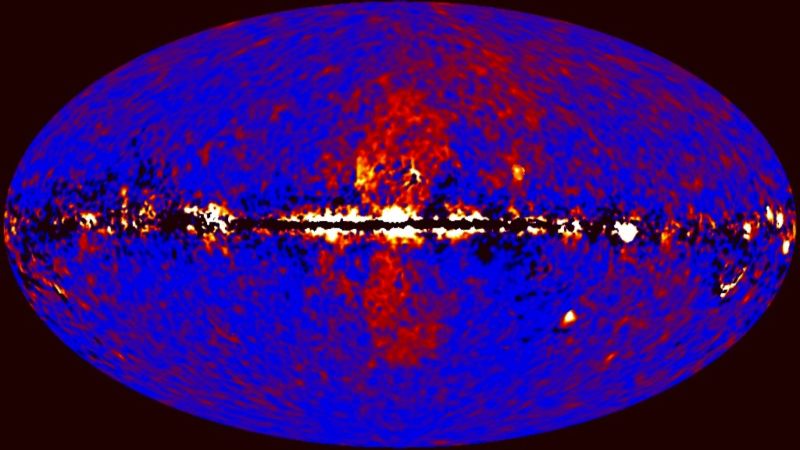Highest-energy cosmic rays bounce off bubble, irradiate Earth
Ars Technica » Scientific Method 2017-09-07

Enlarge / Our galaxy's Fermi bubbles are the dense patches of red above and below the center of this image. (credit: NASA)
Cosmic rays are a nuisance, a source of mystery, and a window into the galaxy. Cosmic rays are high energy bursts of particles, mostly protons. These slam into the atmosphere, generating showers of other high energy particles. We see them, whether we want to or not, as streaks in images or errors in computer memory. They are, to put it bluntly, a minor nuisance for every researcher. They are a major nuisance for dark matter and neutrino detectors the world over. The cosmic ray noise is so bad that is has driven physicists to live at the bottom of mine shafts, muttering in order to get away from them.
But cosmic rays also been a source of mystery for other physicists. Where do they come from? That question remained fairly contentious up until a few years ago, when supernovae were finally convicted of making neutrino scientists miserable. It turns out that as a star explodes, the magnetic field associated with the shock wave can accelerate particles up to energies of about 1015electronVolts (For comparison, the LHC works at about 1012eV).
That accounts for most, but not all of them. Cosmic rays at even higher energies have been detected, and they have remained a mystery. Now, it seems that they may actually also come from supernova, but not by a direct route. First, they have to exit the galaxy and then come back hot and angry after being given the shock of their lives.